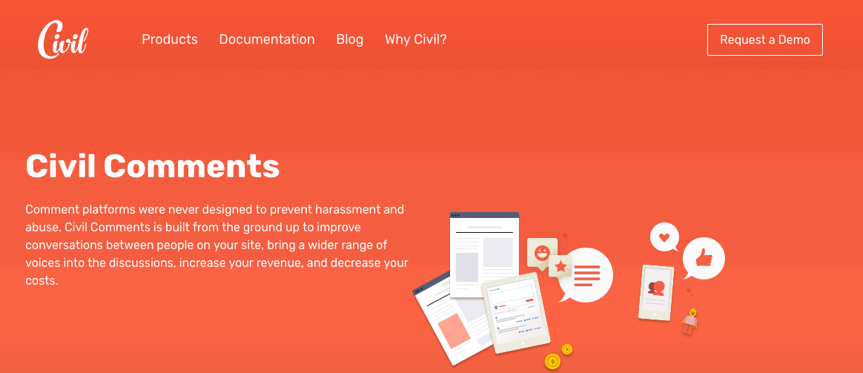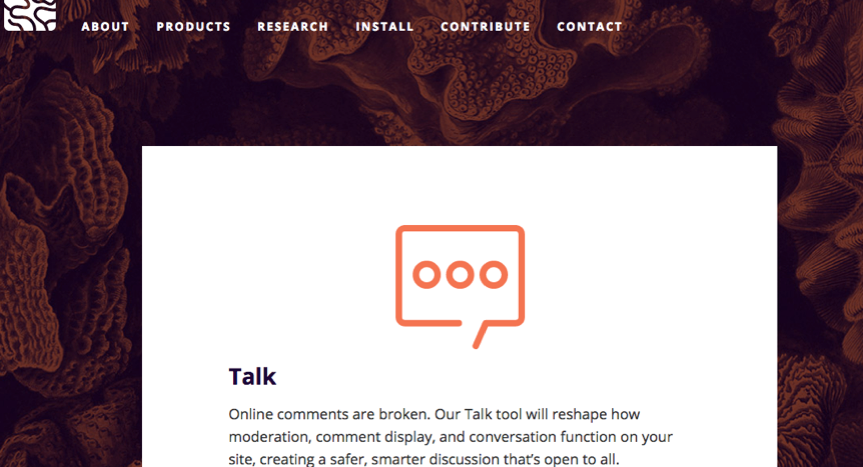[Long read] Time to rethink the (often maligned) comment section?
On the one hand this was because of the proverbial “pain” caused by trying to control trolling and debate reaching the “pits of despair” on these sections, on the other because utilising social media to do the job seems an obvious alternative, less painful choice.
At first glance, simply removing the pain point (and avoid the risk abject negativity on comments sections can pose brands) to shift the conversation to social media may make sense. Besides, social is afterall “where the people are.”
But then, in an age where media, in particular news media, stand accused of having lost touch with the sentiment of many constituencies in the population (think Brexit, the US presidential election), isn’t it perhaps time to re-consider the role of comments sections again, as potentially one means for directly engaging audience and rebuilding the relationship of trust?
In a recently released survey by the Engaging News Project at the University of Austin, one of the key findings was that 81 per cent of “commenters want journalists to bring facts and expert opinions” to comments sections.” The survey, supported by The Coral Project, surveyed 12,000 commenters across 20 US news sites. Two of the (of several) findings included:
- 78 per cent identify as exclusive commenters on just one site. (Showcasing a kind of loyalty to that site)
- Top reasons for commenting are to express emotion or opinion, followed by correcting inaccuracies or misinformation. (Think about this for a minute, in context of the most unusual political campaign in the US just past)
And in other recent news, reader engagement featured as one of the main discussion points report by the New York Times’ 2020 Group – Journalism that stands apart. “Perhaps nothing builds loyalty like reader engagement – the feeling of being part of a community,” the report states. It mentions “research and anecdotes” showing readers “value the limited opportunities we provide to engage in discussion” and, “Asking readers to invest time on our platform creates a natural cycle of loyalty.”
While earlier in January, The Washington Post told readers it is launching a newsletter dedicated to the best reader comments, as a nod to commenters’ participation on the site.
Two organisations setting out to tackle the oft-considered “murky” world of on-site comments are The Coral Project and Civil Company.
Below we speak to Greg Barber, director of Digital News Projects at The Washington Post, who is also The Post’s lead for The Coral Project, and to Christa Mrgan, co-founder and VP of design at Civil Co – discussing topics such as how they try to deal with “pain points” comments sections’ cause many a publisher, overcoming the problem of echo chambers and trust, monetisation opportunities, ongoing innovation and more. First, about the two organisations:

Above: Greg Barber, director of Digital News Projects at The Washington Post (left) and Christa Mrgan, co-founder and VP of design at Civil Co
The Coral Project
The Coral Project is a collaborative project between The Post, The New York Times and Mozilla. “It helps news organisations and their audiences connect online through open-source software and renewed best practices,” explains Greg. “The Coral Project has released one product, our form builder and gallery creator called Ask, and is working on another, our comment system called Talk. The Coral Project is funded by a $3.89 million grant from the John S. and James L. Knight Foundation.”

Civil Co.
Civil Co. is the brainchild of CEO Aja Bogdanoff (“a real comments nerd,” according to Christa), who was community manager at TED for five years. There “she became obsessed by online behaviour dynamics and concerned with improving civility in online discourse. She taught herself to code, building some in-house moderation tools for TED, and eventually decided to pursue her ideas for Civil Comments on her own. “I’d (Christa) been designing software for about six years when she asked me to join her on her mission to fix comments.” Civil Comments is the company’s first product, aiming to do exactly what the name suggests. It uses a combination of product design, algorithms and a “Rate before you post” system to manage postings. The system also “automatically warns bad actors, and limits their participation as needed.”

On negativity and the resource impact of managing comments sections
GREG, The Coral Project: “Our approach to evolving comments at The Post and at The Coral Project focuses in part on smart moderation: giving news organisations tools to find the best contributions from users, to remove contributions that violate their discussion policies, and to help users derive value from their commenting experience.
“We’ve talked with hundreds of journalists at more than 150 news organisations, and many of them say that much of the time their organisations’ spend in comments is focused on removing submissions that violate their policies. The better strategic approach is to find those readers who are contributing valuably and boost their contributions, rewarding them with the kind of placement and attention that furthers their goal of having their voice heard.
“When we boost the signal over the noise, we create a new incentive structure: commenters see the kind of contributions that receive attention and pivot their behaviour. The tools The Coral Project is building aim to scale that approach.”
CHRISTA, Civil Co.: “We know this pain (of moderating boards) well. As a community manager, Aja spent years waking up in the middle of the night, worried that someone had posted something terrible in the comments while she slept. She could remove the worst of the personal attacks and threats, but she was always reacting to bad comments after they were posted, when the damage had already been done. She could never get out in front of the problem, even after hiring help to assist with moderation. The reason is simple: moderation works, but it doesn’t scale. There are always more commenters than there are moderators.”
According to Christa Civil’s use of technology in combination with community as moderators solve the problem. “We know this is the best solution because we’ve tried the others, including training natural language processing algorithms to automatically reject and approve comments. The truth is, language-processing algorithms alone can’t solve this problem.
“Human speech is just too nuanced for machines to make pass/fail decisions on. Machines are great at looking for patterns in behaviour, though. So, we let the humans analyse the text, and then put our algorithms to work analysing the commenters’ voting patterns to determine which votes are fair. Our system automatically warns and restricts users who aren’t following community guidelines – a method we find is far more effective than banning users outright. The end result is a 95 per cent reduction in flags and complaints, and spam comments disappear.
“Putting this bit of friction into the user interface also has the effect of improving what people submit in the first place. Only about 4 per cent of comments submitted via Civil Comments need to be deleted (and most of that is handled by the community itself). This compares to up to 50 per cent of comments submitted via systems that use traditional, after-the-fact moderation.”
Social media ‘left publishers in the dust, connecting people around stories’ – read further conversation with Greg and Christa, adding Jennifer Brandel, Co-founder and CEO of Hearken, a “listening-first” platform, on the difference between building communities on-site and on social, and how the two can work in tandem, here.
On echo chambers or filter bubbles, and using comment sections to judge reader sentiment
Post the US election, there has been a lot of talk about “echo chambers” or “filter bubbles” existing on social media (i.e. people engage with what “like-minded” friends and “liked” brands share, and are insulated from other opinions). Mainstream media there have also been accused of living in “New York” or “Washington” bubbles, not truly connecting with “popular opinion” elsewhere. Considering the potential impact of such bubbles, we asked Greg and Christa whether comments sections could’ve contributed to better understanding sentiments of large parts of the population?
GREG: “Fully understanding the value of comment sections means knowing why readers participate. So we asked them (with the Engaging News Project, mentioned above) to understand why they comment and to learn more about their commenting experience. About three quarters of the respondents told us that they want journalists to bring fact-checking and expert opinions into the comment sections. Around 44 per cent of respondents on each site told us they leave comments in order to express an emotion or opinion. That squares with more anecdotal conversations I’ve had with commenters over the years, who’ve said that they comment to have their voice heard.
“Understanding what motivates a person to comment on a site can help news organisations to better frame what they’re telling us — and create spaces that help them to communicate and help us to listen.”
CHRISTA: “Comments sections really offer a cross-section of America, and yield insights into what people are most concerned and passionate about. When readers have a platform to express their opinions, they feel heard, especially when the journalists themselves join the conversation. Journalists can get a direct line to their audience by reading and engaging in the comments; but this will only happen when journalists know they won’t face harassment and abuse in these conversations, which is another reason why it’s so important to ensure that comments sections remain civil.”

On whether media brands’ comment sections can counter echo chambers
It can be argued that media brands attract like-minded people anyway, so would those comments sections not be echo chambers in own right or do they actually expose people to other viewpoints?
GREG: “I’ll point you to our research for an answer to this question, too. Another study sponsored by The Coral Project involved NYU researcher Eric French talking with 15 frequent commenters about why they comment. One of the most-discussed themes was diversity of opinion. Eric wrote, ‘Most participants told us that they comment because they want to be challenged by a diverse group of smart people who offer viewpoints different from their own.’
“What news organisations can do to give those signals a boost is to participate — spur on a discussion, encourage those with different viewpoints to challenge each other respectfully, and highlight the results to show to all involved that the conversation has value.”
Comment sections can also help develop trust. “What we’ve seen in comments at The Washington Post is that when our readers get to know each other better, greater understanding and more productive conversation tend to follow. Most people have had similar experiences in their own lives, in which a group or a concept becomes less confusing or scary with personal interaction.
“By bringing readers and journalists together, comment sections and other engagement spaces can help all involved to see each other as people. [But] Many comment sections aren’t structured in a way that fosters that kind of conversation, which is what helped to spur our work at Coral.”
CHRISTA: Civil Co. “sees that (exposing people to different viewpoints) more in comments sections than in social media.” A problem remains that often “controversial subjects can fuel flame wars, and even benign conversations often devolve into personal attacks and threats”, which drives people away no matter the environment. That’s why, “We’ve designed our platform to create a space for passionate debate while still enforcing social norms. With Civil, everyone can be heard, so long as they treat each other with basic civility. We’ve seen some inspiring and thought-provoking conversations between people with opposing views, but also plenty of arguments that just fizzle out instead of exploding, because there’s a new baseline of acceptable behaviour.”
On brands doing comments sections well
GREG: “I’ve talked to folks at dozens of news organisations during my research for The Coral Project, and the majority of them are thinking critically about how to engage their readers. A few that stand out: The Guardian, which is engaging with readers in a fast-twitch way in its comments and in a slower-twitch way with Guardian Witness. The Financial Times has also partnered with its readers to gain insights around Brexit and other topics.
“Closer to home, our Coral Project partners at The New York Times diligently comb through their comments to create pre-moderated forums on a raft of stories each day. And my home shop The Washington Post has some of the best communities of readers on the internet, from the Capital Weather Gang to readers of Carolyn Hax, our advice columnist, to The Boodle, the quirky discussion forum on Joel Achenbach’s Achenblog. Trolling is almost nonexistent in those spaces, because the readers know each other from months and years of interacting, so they look out for each other.
“As for non-news brands, who doesn’t look at reviews on Amazon or Yelp or TripAdvisor before making decisions on purchases, meals, or trips? These forums’ ubiquity is another signal to newsrooms: engagement spaces are powering some of the world’s most successful companies, so we have plenty of room to grow ours.”
CHRISTA: “From a news/media perspective, The New York Times, The Washington Post, TED, The Guardian, and the Financial Times all do an incredible job with their communities. But they all have full-time staff dedicated to actively maintaining their communities. Their efforts pay off in terms of thoughtful, valuable commentary, but not everyone can put significant human resources behind it.
“The Globe and Mail, Canada’s largest newspaper, also has a large and thriving commenter community, but it requires less work now that they’ve switched to Civil Comments.
“From a non-news perspective, Stack Overflow is a community that provides invaluable resources to developers of all kinds, with very few problems with abuse. And it’s largely thanks to the way their system is designed, with earned trust levels and lots of community checks and balances. (In general) I think sites that foster a real sense of community, and which establish and uphold community norms and standards of behaviour fare the best, because they’re so much better-equipped to weather interpersonal conflict.”

On what makes for a good comments platform and policy:
GREG: “A good comments platform is flexible to develop on and provides the news organisation and readers with tools to create and curate the kind of experience that best fits their goals for storytelling, participating, and reading.
“A good discussion policy is rooted in the news organisation’s overall engagement strategy, is clearly communicated, and aims to benefit participants, readers, and the site’s storytelling.
“Recent research by Nate Matias at MIT indicates that making the rules of the road visible and easily understandable can help boost the civility level of a discussion. That’s worth some thought at news organisations.”
CHRISTA: “Having community guidelines prominently posted helps to set expectations and encourage good behaviour, but it mostly comes down to ‘broken windows theory.’ If commenters see harassment and abuse in the comments, they will decide that this behaviour is accepted here, and either follow suit, or choose not to participate in the conversation at all.
“So it’s imperative that community guidelines and behaviour norms be continually reinforced, not only by the publishers, but by the users themselves. When you design your commenting platform with that goal in mind, the end result is a community that remains healthy and continues to grow.”
On monetising comments sections
GREG: “Comments can fit into a media organisation’s business strategy in several ways, including:
- Advertisers and sponsors love engaged users, and commenters and comment readers are among the most engaged users a news site has.
- Advertisers also often aim to place ads near users with a specific topical interest. There’s no stronger indication of interest in a topic than a user contributing an original thought about it.
- Engagement spaces like comments can help drive loyalty, which can lead readers to pay for a subscription or membership.”
CHRISTA: “The traditional approach to monetising comments has been to just bolt banner ads or ‘chum boxes’ onto them, but I know we can all do better. One problem with monetising comments has been that comments are not generally brand-safe, and so advertising around them has not been seen as high-value. But with the civility problem solved, comments become more brand-safe and are monetisable, yes.
“To provide a good ROI to the ad-buyer, that monetisation has to provide real value to the user. We recently added emoji reactions to comments, which is one fun new way we’re experimenting with advertising and revenue sharing. Brands can sponsor a custom emoji reaction that are fun to use, and which readers and commenters alike will see.”
On innovation and the future of comment sections
GREG: “What news organisations will see from The Coral Project in the next few months is our Talk system, which will provide ways for them to manage their communities at scale through smart moderation and analytics-driven insights, and for readers to curate their own experience using more robust profile options, plus stream sorting and filtering.”
CHRISTA: “The future of comments is to help strengthen independent media by giving sites the same fun and addictive social experience that the siloed social media platforms have had, only in a more distributed and public forum. The reason this hasn’t worked so far is that other distributed platforms don’t provide safety from abuse the way that (many) social media platforms do, and so they hit an ‘abuse ceiling’, past which it’s impossible for them to grow.”
“For us, now that we’ve solved the civility problem, we’re excited to continue to evolve our platform to be even more fun and engaging, making online social experiences a win for publishers, ad-buyers, and audiences.”
More like this
Publishers bring native ads to their comment sections
Instagram introduces update to tackle abusive comments
The innovative startup that is helping the public shape the news







